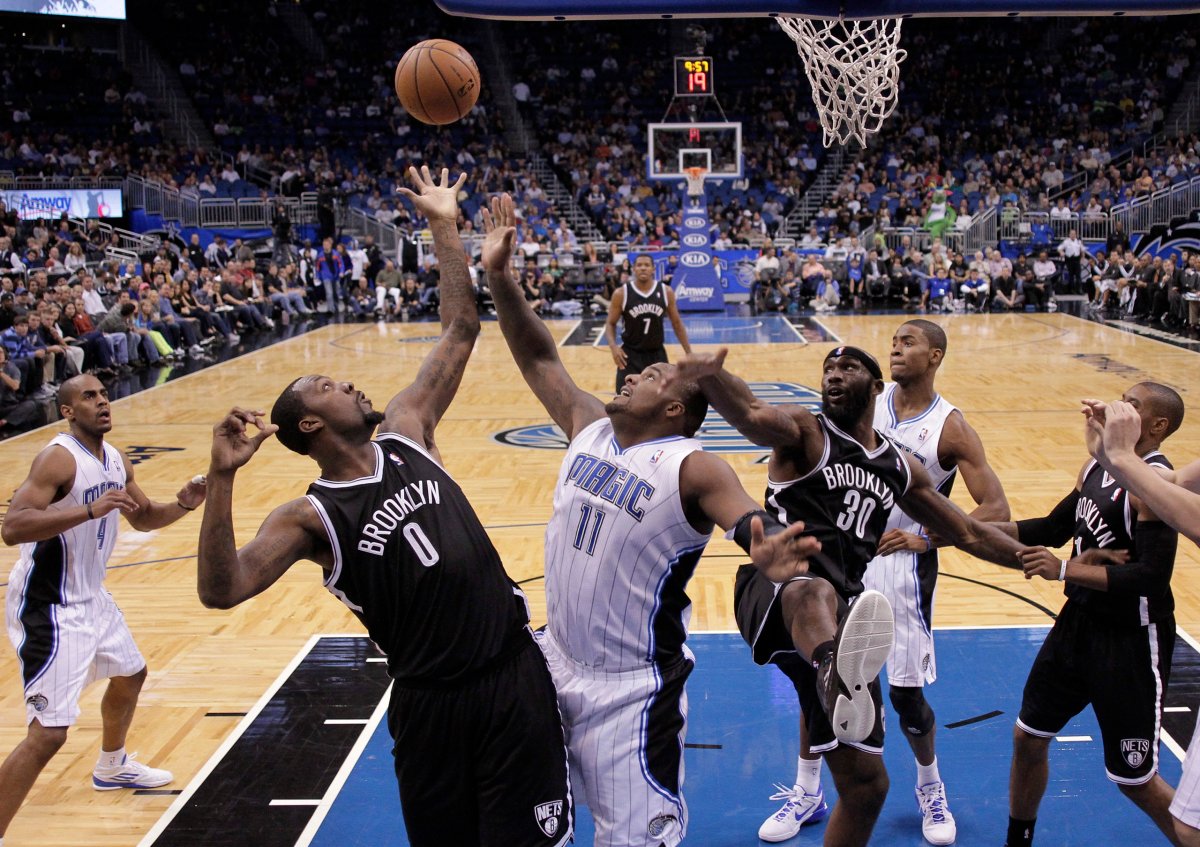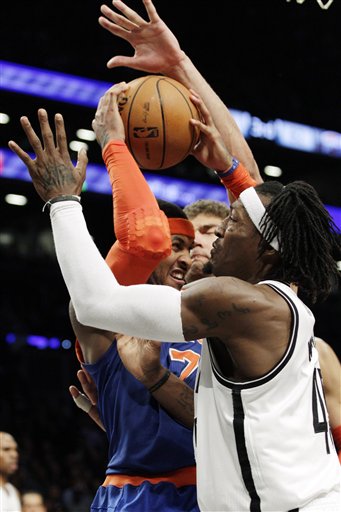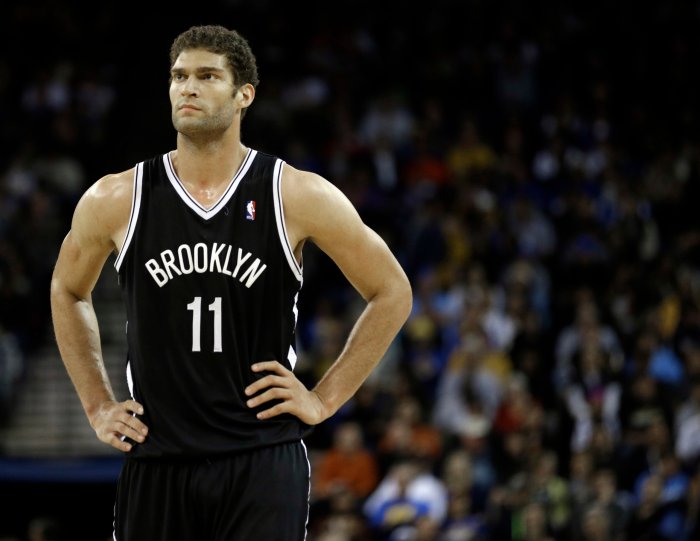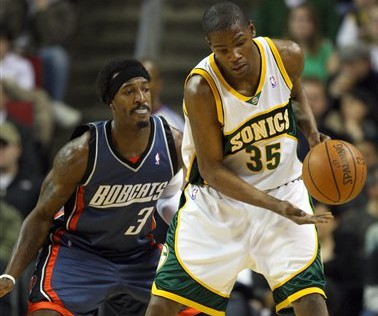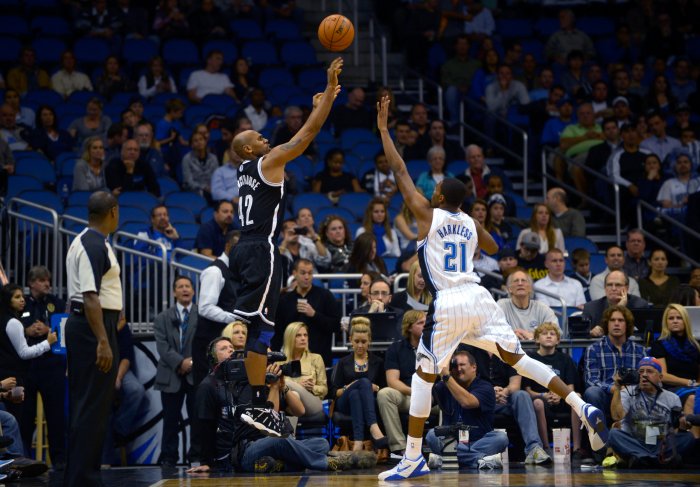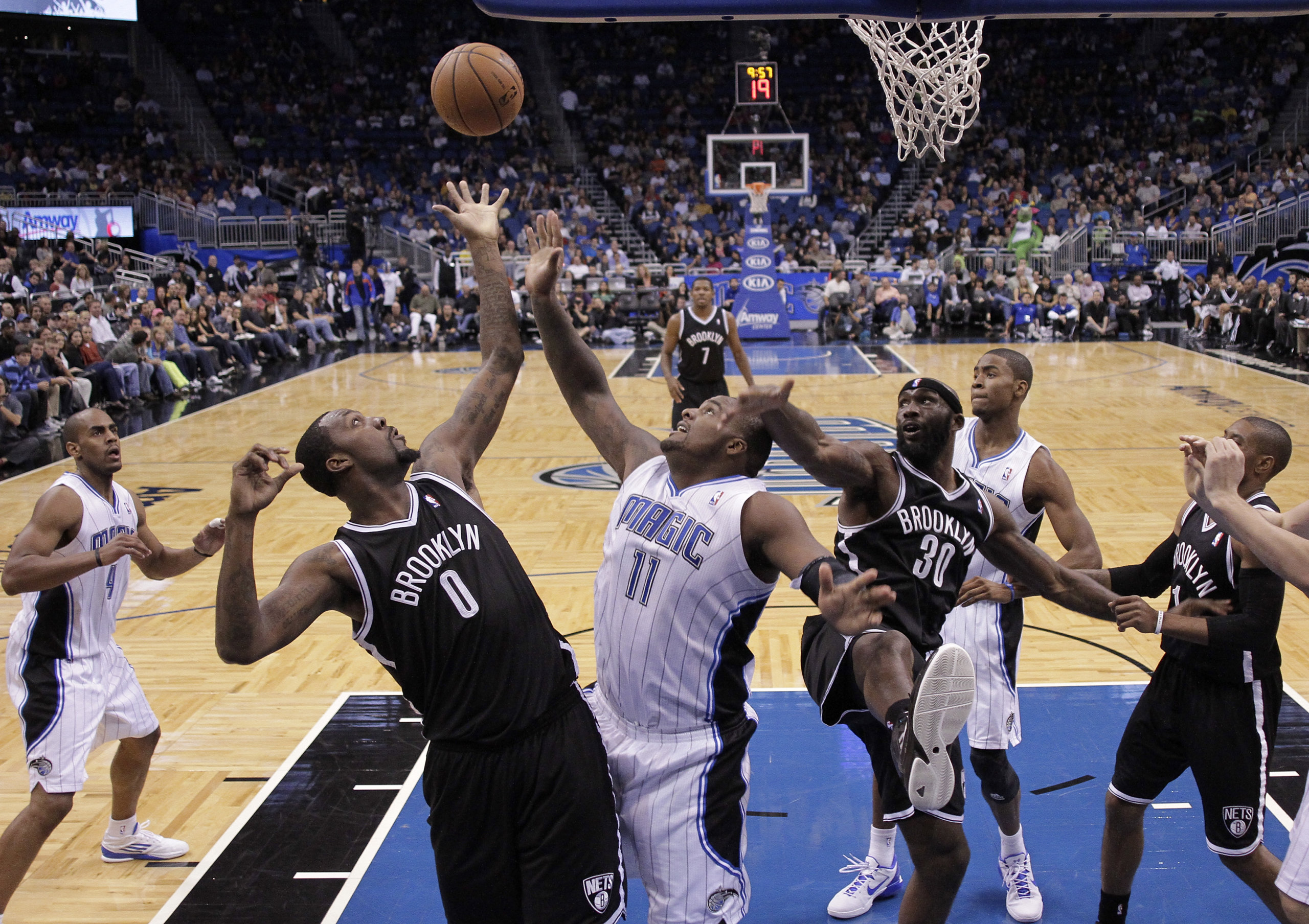
Quiz for you — do you know which four players have been the most productive Brooklyn Nets players when they share the court together (minimum 50 minutes played together)?
Hint: Deron Williams isn’t one of them. Neither is Brook Lopez, or Gerald Wallace.
Give up?
How about C.J. Watson, Joe Johnson, Reggie Evans, and Andray Blatche?
With those four together on the floor, the Brooklyn Nets outscore their opponents by 29.5 points per 48 minutes. And second place? C.J. Watson, Jerry Stackhouse, Reggie Evans, and Andray Blatche, outscoring opponents by 27.6 points per 48 minutes. With Joe Johnson often acting as its anchor, The self-proclaimed Bench Mob has been most effective Brooklyn Nets unit this season.
How have they done it? Defense. In 71 minutes this season, the Bench Mob has allowed just 99 points (that’s 66.9 per 48 minutes). Opponents have shot 38.5% against them, have turned the ball over 26 times to 109 field goal attempts, and shot a measly 5-26 from beyond the arc.
The Bench Mob has played an aggressive brand of defense, with constant pick-and-roll hedges and quick recoveries, and a role for each player. When opposing guards try to dribble around screens, Reggie Evans or Andray Blatche (whoever’s guarding the screener) meets them at their point of attack, both cutting off open three-pointers, the lane to the basket, and potential passing lanes. While Evans/Blatche do this, the other one then rotates over to the then-screening, now-rolling big man. The guard on the opposite side will then drop down into the paint to ensure that there’s not an easy layup created by the other player leaving his man.
That leaves only the player furthest from the ball open, and if the opposing team attempts a skip pass, the Nets have time to recover to their men accordingly. A full rotation isn’t always necessary — sometimes only a flash towards the roll man to freeze the offensive player is all this unit needs to recover defensively effectively. And, as any unit with Reggie Evans, it ends with a relentless attack to secure the rebound and limit opponents to just one shot.
The system is flexible; the Nets aren’t aggressively trapping every player they see. “It’s predetermined most of the time,” Kris Humphries said last season about the defensive system. “We have a game plan that’s personnel-driven.” The difference is, this year the Nets have a bench that plays to it.
You can see those elements this year: those aggressive “blitz” plays aren’t happening against players like Orlando Magic point guard Ish Smith, who is 0-5 from three-point range this season. Against Smith, the Nets “cover,” hanging back and not letting him split between the two defenders.
Here are two examples of how this defense has worked with those five players in the game; C.J. Watson, Jerry Stackhouse, Joe Johnson, Reggie Evans, and Andray Blatche:
This first example is just swarming Brooklyn Nets defense (I NEVER GET TO SAY THAT). You can see Evans rush towards the ballhandler Arron Afflalo (career 40% shooter from 3) at :08, and simultaneously, Andray Blatche and Joe Johnson shift over to cut off the lane to the basket. Afflalo can’t see or dribble through Evans, and is forced to pass to the well-guarded E’Twaun Moore in the corner. Moore tries to dribble into the lane to no avail, and kicks it out to J.J. Redick for another screen play. Evans swarms the play, and the flustered Redick throws a bad pass into the lane that nearly ends in a turnover. The teams play hot potato for a moment before the possession ends in a missed three.
This second example shows many of the same principles, and how they trigger. It starts the same way — once the ballhandler (Cavs guard Dion Waiters) is in shooting range, Evans leaps out at him to prevent any further movement. Like clockwork, Blatche had anticipated the screen play and was waiting for the roll man (Cavs forward Tristan Thompson), and Thompson has no position to score once he catches the ball. Evans sees Blatche is keyed in on Thompson, and adjusts to cover Blatche’s man (Cavs center Samardo Samuels), who had been covered by Watson. With the shot clock down to 7, Waiters forces a bad jumper. End of possession.
It’s a bread-and-butter, call-and-response defense on a string, one that relies on the trust that the guy behind you will help you out, the guy behind him will help you out, and that each player’s committed to adapting. It hasn’t been perfect, but with these four guys on the floor, it’s been about as good as a coach can ask for. The Brooklyn Nets starters are still working on getting used to this system — and it’s getting there. But early returns indicate that it’s come natural to the Bench Mob.

